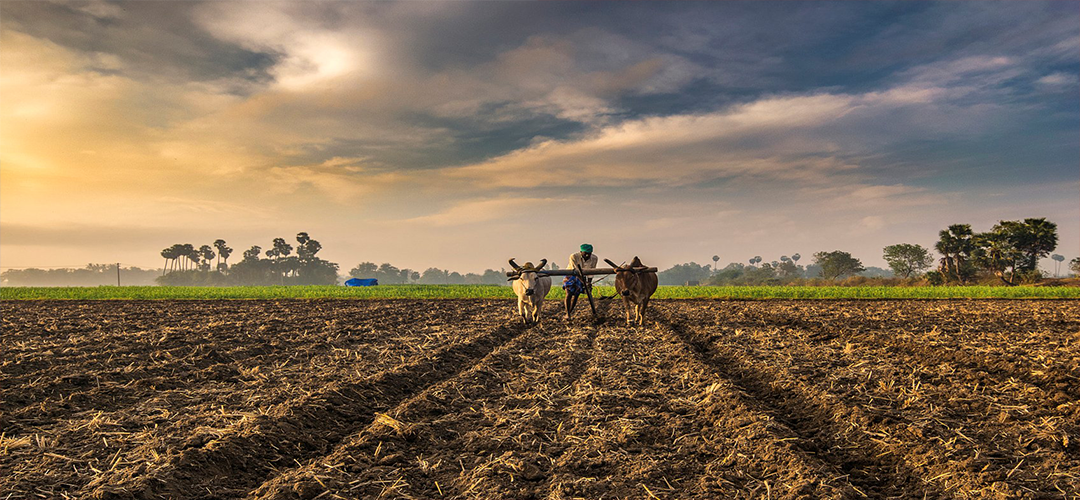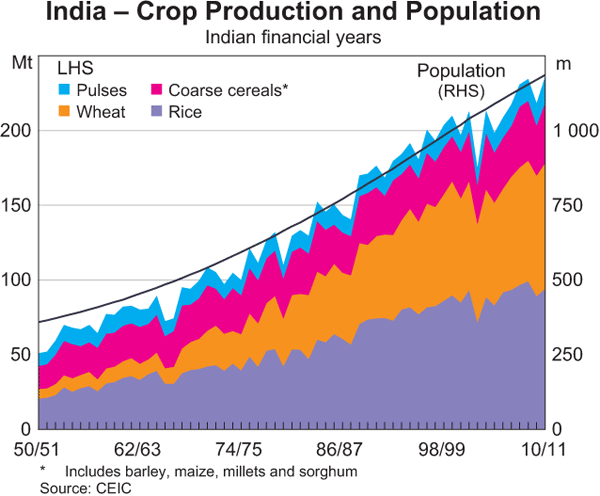RESCUING INDIAN AGRICULTURE
September 24, 2022 | Expert Insights

In India, rain-fed agriculture accounts for about 68 per cent of all croplands. 60 per cent of India's rice-harvesting land is irrigated, leaving the remaining 40 million hectares (100 million acres) dependent on rainfall and thus vulnerable to drought.
BACKGROUND
India has an extensive agricultural industry. Although the sector's contribution to GDP has decreased by half over the past 30 years to about 15 per cent, it still employs about half of India's workforce. It is largely responsible for its GDP volatility. India is a major producer of several agricultural goods and has the world's second-largest area of arable land. India, which is also a significant producer of pulses like chickpeas and lentils, which are essential sources of protein in vegetarian diets, surpassed the United States as the world's largest milk producer around the turn of the century.
Over the past three decades, agricultural productivity has increased significantly, and, more crucially, food production has mostly been able to keep up with the demands of a growing population. Between the middle of the 1960s and the middle of the 1970s, wheat production climbed by almost 100 per cent, and by the end of the decade, the nation was producing enough grain to meet its own needs. Food costs decreased due to the growth in agricultural productivity, which also increased rural incomes. The result was a decrease in rural poverty.
ANALYSIS
The agriculture industry in India is struggling as a result of climate change. According to a report by the National Intelligence Council, there are impacts on high-input, high-output agriculture due to climate change affecting productivity negatively even as demand for food and other agricultural products rises because of rising population and standard of living. On the other hand, millions of subsistence and smallholder farmers will experience immediate hardship and hunger because of their inability to predict climate and make informed decisions about when to sow, what to grow, and how to time inputs.
Crop loss causes farmer hardship, inflation, and other severe economic repercussions. The average annual agricultural losses caused by extreme weather events cost India 0.25 per cent of its GDP. In addition, it is said that environmental stressors make farmers' debt loads worse, which leads to some of them committing suicide.
The National climate vulnerability assessment report released in 2021 has identified Jharkhand, Mizoram, Orissa, Chhattisgarh, Assam, Bihar, Arunachal Pradesh, and West Bengal as states highly vulnerable to climate change. This assessment contextually recognised vulnerability based on pre-existing situations. In this way, the susceptibility of a natural ecosystem or socio-economic system to harm from a first-order impact of a hazard or stressor is seen as a function of its "sensitivity" (susceptibility to harm from a hazard or stressor) and its lack of "adaptive capacity" to overcome or cope with such situations. The report pointed out that these states, mainly in the eastern part of the country, require prioritisation of adaptation interventions.
A networking initiative called National Innovations in Climate Resilient Agriculture programme (NICRA) was started in 2011 by the Indian Council of Agricultural Research (ICAR) to explore how climate change may affect Indian agriculture. A High-Level Monitoring Committee (HLMC) is now reviewing the NICRA project and invited representatives from several governments of Indian ministries to suggest actions to increase the adaptability of Indian agriculture to changing climatic conditions.
Wheat germplasm from advanced breeding lines and land races has been tested for heat/drought tolerance as part of the NICRA project. High-yielding cultivars like HD 2967 and HD 3086, produced in significant quantities in North-west and North India, have been made available by the ICAR-Indian Agricultural Research Institute (IARI). Wheat planting has advanced in Punjab and Haryana thanks to zero-till planting.
Assessment
- An investment in hydroponic farming, a water-saving way of producing pesticide-free produce on rooftops and terraces, would be beneficial in curbing the effects of climate change in India. It is already gaining popularity among urban farmers in India. Moreover, studies predict that between 2020 and 2027, the hydroponics industry in India will expand at a rate of 13.53 per cent CAGR. "
- More efforts are required to quicken the pace of Drip Method of Irrigation (DMI) coverage due to the impending water scarcity and changes in rainfall patterns brought on by climate change.









Comments